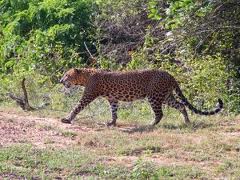Sinharaja Forest Reserve is a national park and a biodiversity
hotspot in Sri Lanka. It is of international significance and has
been designated a Biosphere Reserve and World Heritage Site by
UNESCO.
The hilly virgin rainforest, part of the Sri
Lanka lowland rain forests ecoregion, was saved from
the worst of commercial logging by its inaccessibility,
and was designated a World Biosphere Reserve in 1978 and a
World Heritage Site in 1988. The reserve's name translates as
Kingdom of the Lion.
The reserve is only 21 km (13 mi) from
east to west, and a maximum of 7 km (4.3 mi) from
north to south, but it is a treasure trove of endemic species,
including trees, insects, amphibians, reptiles, birds and mammals.
Because of the dense vegetation,
wildlife is not as easily seen as at dry-zone
national parks such as Yala. There are about 3
elephants and the 15 or so leopards are rarely seen.
The commonest larger mammal is the endemic Purple-faced Langur.
An interesting phenomenon is
that birds tend to move in mixed feeding flocks,
invariably led by the fearless Greater Racket-tailed
Drongo and the noisy Orange-billed Babbler. Of Sri Lanka's
26 endemic birds, the 20 rainforest species all occur here,
including the elusive Red-faced Malkoha, Green-billed Coucal
and Sri Lanka Blue Magpie.
Reptiles include the endemic
Green pit viper and Hump-nosed vipers,
and there are a large variety of amphibians,
especially tree frogs. Invertebrates include the endemic
Common Birdwing butterfly and the inevitable leeches.
Peaks
1. Pinipitigala
2. MulawellaAccess ways
1. Kudawa entrance - Colombo --> Kalawana --> Kudawa


 2. Pitadeniya Entrance - Galle or Matara --> Deniyaya --> Pitadeniya
2. Pitadeniya Entrance - Galle or Matara --> Deniyaya --> Pitadeniya 3. Morning Side Entrance -- Galle or Matara --> Deniyaya --> Morning Side Estate









No comments:
Post a Comment